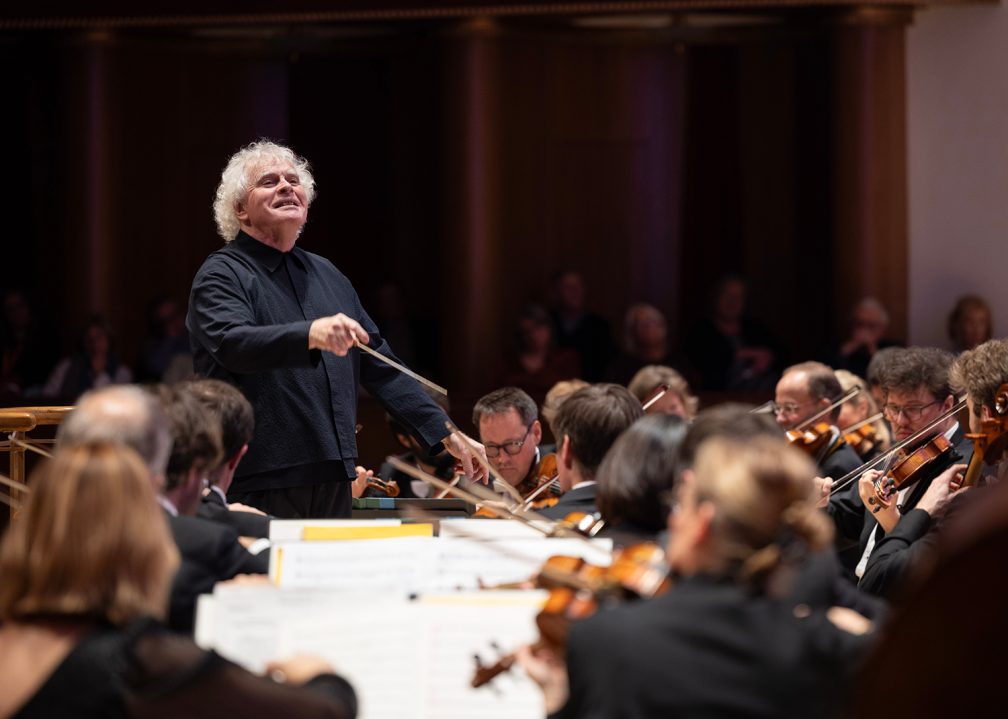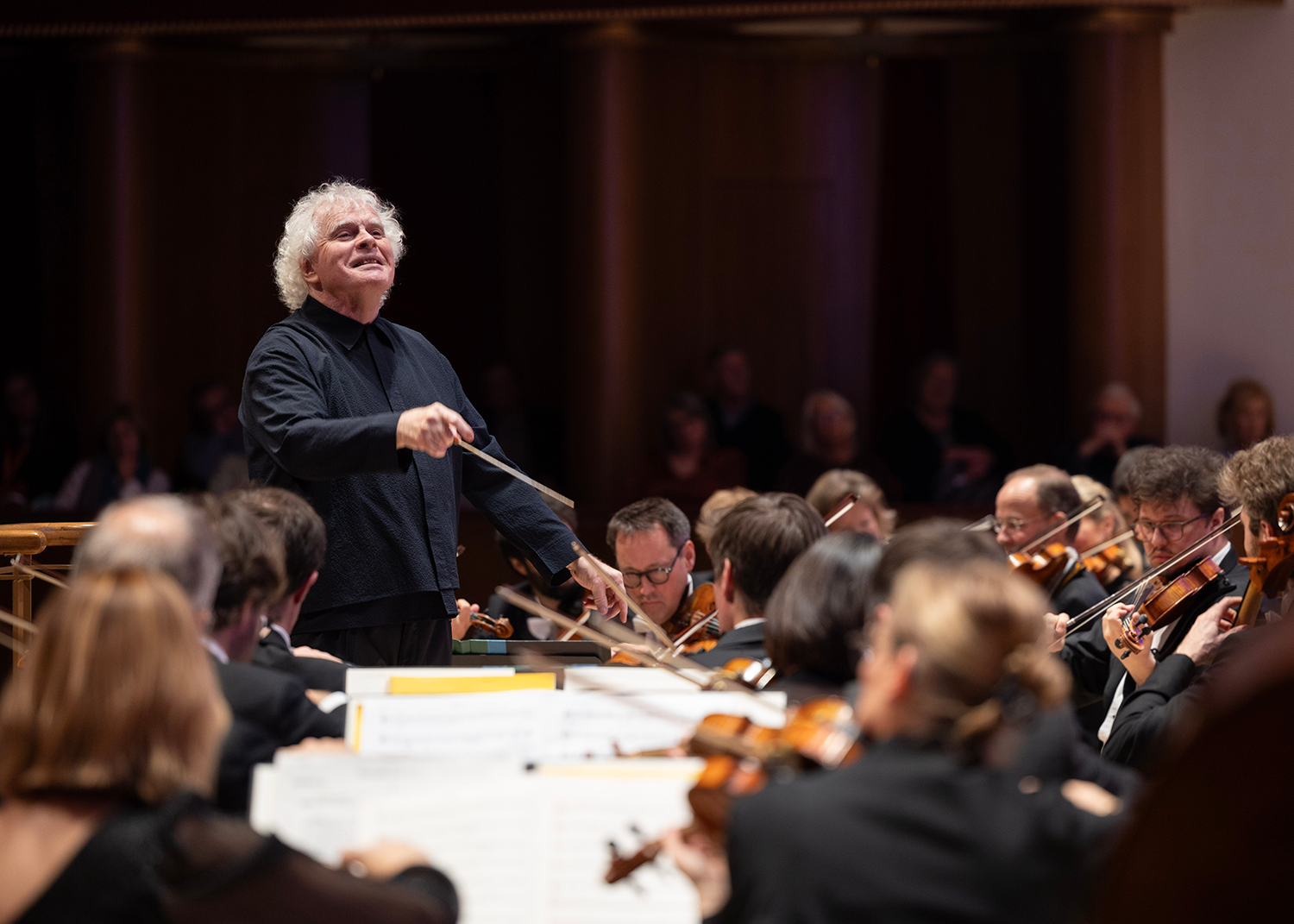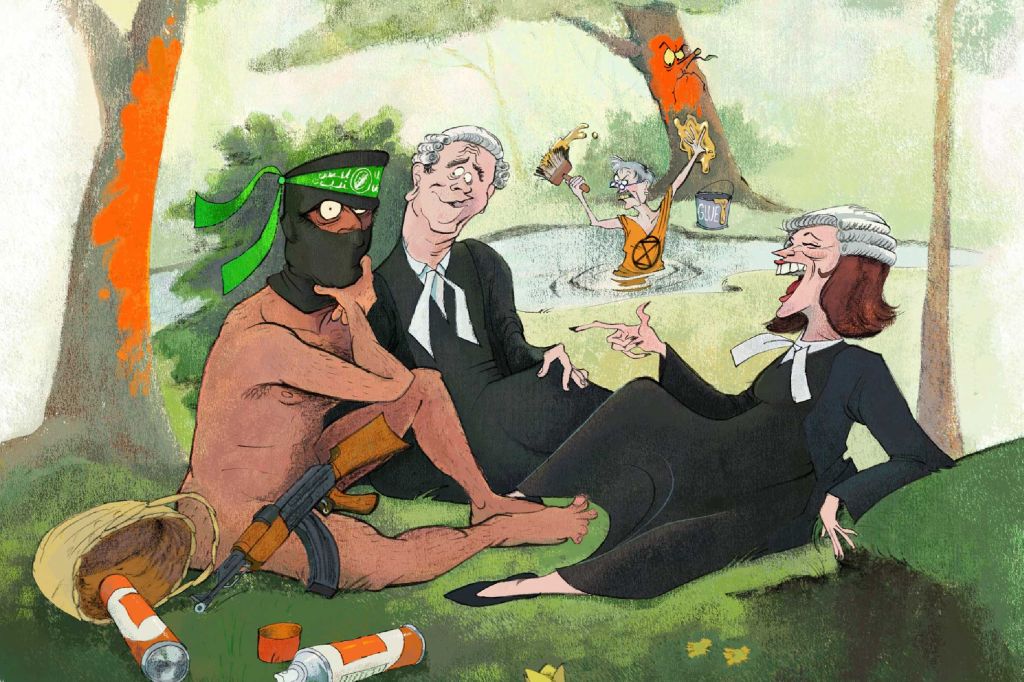
Stravinsky’s The Firebird begins in darkness, and it might be the softest, deepest darkness in all music. Basses and cellos rock slowly, pianissimo, in their lowest register; using mutes to give the sound that added touch of velvet. Far beneath them rumbles the bass drum: a halo of blackness, perceptible only at the very edge of the senses. In Liverpool Philharmonic Hall, with Sir Simon Rattle conducting the Bavarian Radio Symphony Orchestra, you felt your hairs tingle before you discerned a note. Seconds later, the very air within the hall seemed to be quivering with sensuous, engulfing bass warmth.
You can be sure that Rattle anticipated that sensation; planned for it, in fact, from the moment that he confirmed this short British tour with his new orchestra. The BRSO visited two of the UK’s finest concert halls (in Liverpool and Birmingham) and one of its worst (the Barbican) and Rattle knows each of these acoustics intimately. In Liverpool, he’s known it since boyhood, and although the Philharmonic Hall has undergone many alterations it still has the most natural bass resonance of any UK orchestral venue: an analogue-era ambience quite unlike the brilliant digital clarity of Symphony Hall in Brum, which Rattle had built to his own specifications in the late 1980s.
Anyway, The Firebird has been a Rattle party-piece since for ever and you could tell in Liverpool, where his light-touch command – the perfectly gauged tension of every silence and pause – gave Stravinsky’s 50-minute arc a symphonic sense of direction. That’s worth saying, because one of Rattle’s quirks as an interpreter is his habit of getting lost in the moment, momentarily seduced by some flash of colour or twist of harmony. Of course, if you love the sound of a full orchestra – love it with the wide-eyed, boyish love that Rattle, aged 70, clearly still feels for The Firebird – that’s the best kind of weakness to have.
It’s no secret, too, that the BRSO is the orchestras’ orchestra; the ensemble that makes hardened pros go wobbly at the knees, and sends critics spiralling towards Pseud’s Corner. How to describe the solemn, heraldic grandeur of the BRSO trumpets and low brass? Or those creamy woodwinds; and the shimmering, top-down precision with which the violins tackled Stravinsky’s flurries of scherzando semiquavers – like a flock of butterflies performing synchronised aerobatics. Rattle must have known that his orchestra would sound wonderful in this music. Conducting without a score, he gave them a framework to be themselves and wonderful, sure enough, is what they were.
They’d opened with Schumann’s Second Symphony. Another shop-worn criticism of Rattle is that he lacks conventional gravitas in what bores still call the ‘core German repertoire’. (The fact that he has been enthusiastically courted by Germany’s two greatest orchestras – whose players must, presumably, have some expertise in that area – doesn’t seem to count for much with these people.) For my money, Rattle’s unfeigned devotion to symphonists as unshowy (and as loveable) as Schumann and Haydn is yet another indicator of sincerity. No one ever got a standing ovation with the Rhenish symphony.
Interestingly, the BRSO players adapted their glorious sound to Rattle’s conception of this symphony, which was rooted in Beethoven and Schubert rather than viewed retrospectively (the classic mistake with Schumann) through Brahms. Woodwinds shone through transparent strings, framed by tonic-dominant punctuation from the brass. Still, you could see the smile on Rattle’s face (and hear it in the sound) in the finale, when Schumann suddenly drops all pretence at classical objectivity and soars off into Beethoven’s An die ferne Geliebte. The evening ended with an encore – ‘La fileuse’, the spinning song from Fauré’s Pelléas. It melted on the tongue, a final whispered demonstration of supreme finesse.
I didn’t expect much from English National Opera’s staging of Dead Man Walking by the American composer Jake Heggie, whose It’s a Wonderful Life (staged by ENO in 2022) left a gooey, synthetic aftertaste. Anyway, I was wrong. Dead Man Walking is made of sterner stuff and there’s real lyrical muscle in Heggie’s aching score (Kerem Hasan conducted). It pulls you in, as well it might with a plot that follows the platonic relationship between the nun Helen Prejean (Christine Rice) and Joseph de Rocher (Michael Mayes), a rapist and murderer awaiting the lethal injection in a Louisiana gaol.
Annilese Miskimmon’s production lands its punches without sensationalism, driven by thrilling performances from Rice – unrecognisable in blouse and skirt as the fidgety, terrier-like Prejean – and Mayes, a veteran interpreter of this role who swung from beefy machismo to raw torment. Operas that dramatise a purely spiritual struggle are uncommon, and the fact that Dead Man Walking has received some 80 productions around the world since its première in 2000 suggests that it has found a public. I can see why, and ENO deserves high praise for this impressive UK première.








Comments